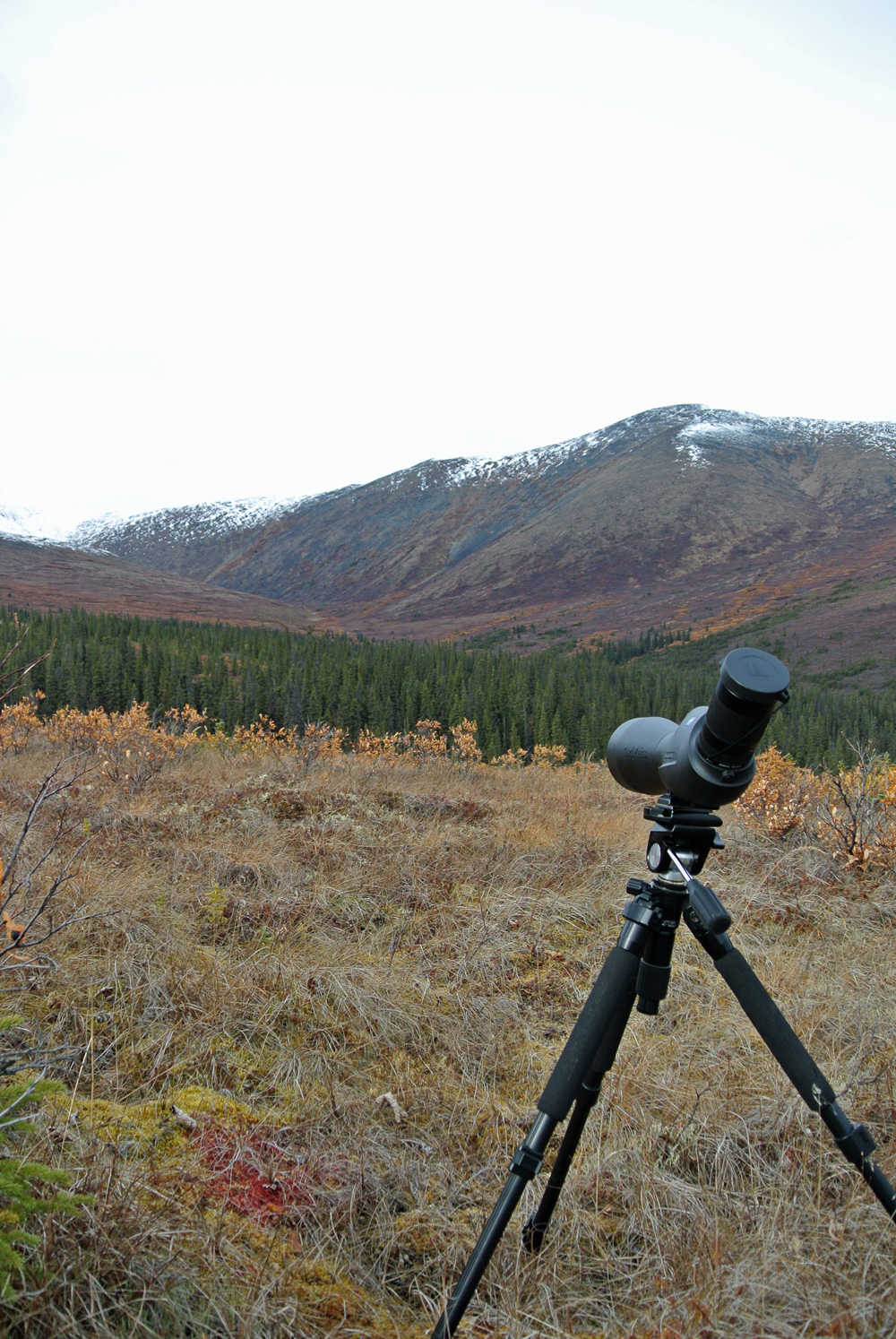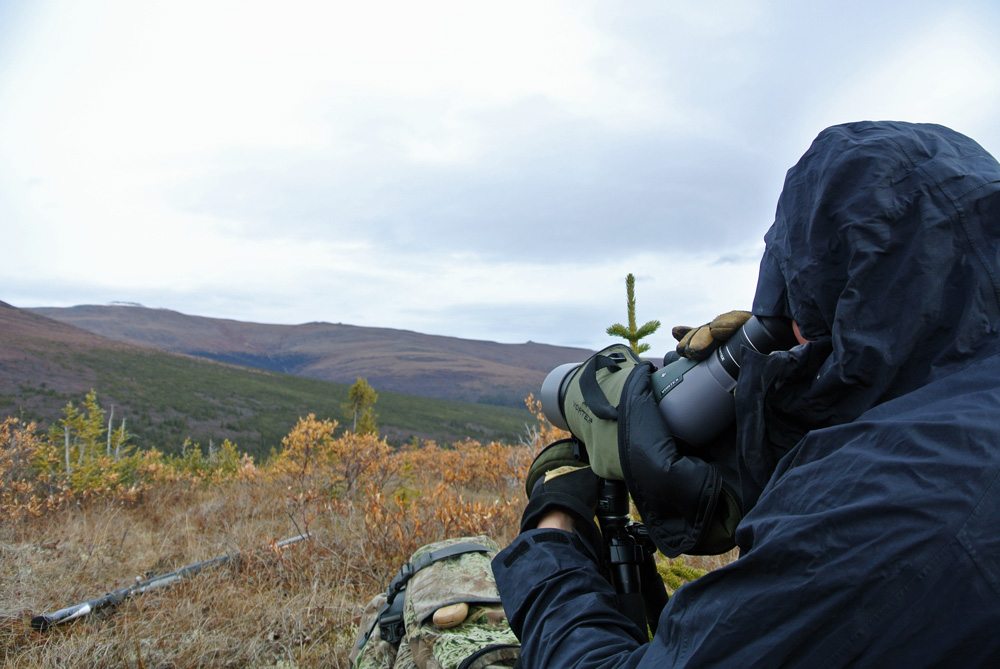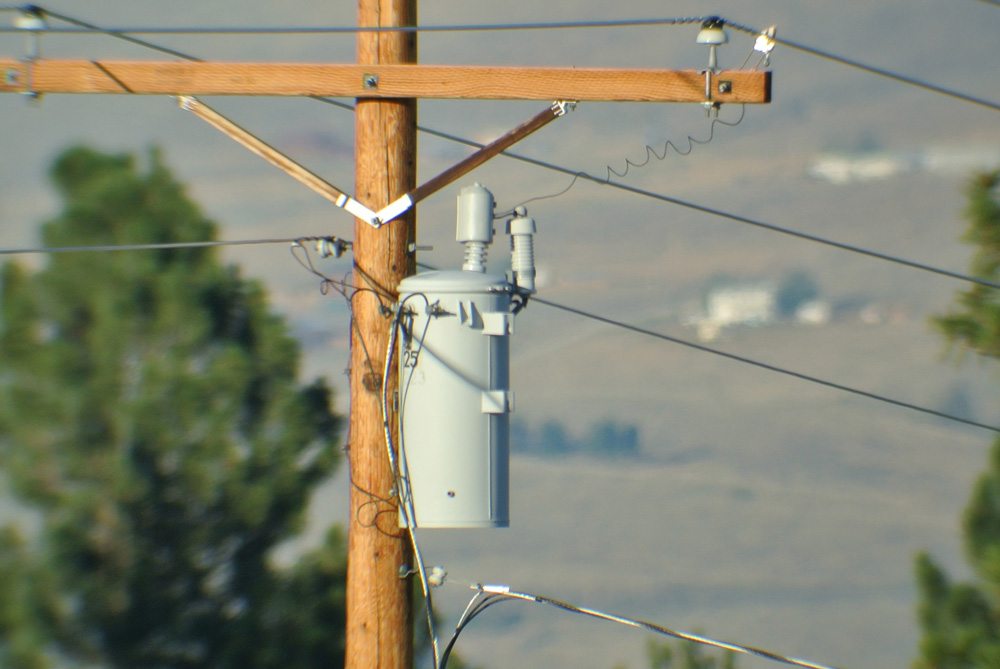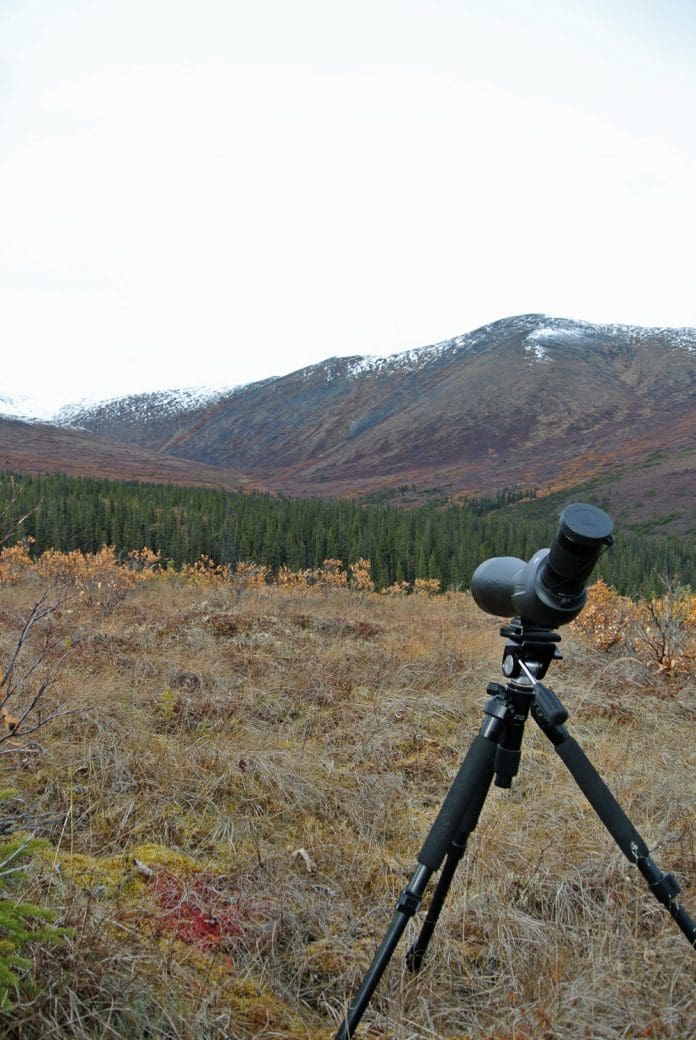Battle of the Big Eyes: Zeiss Diascope 85 tFL and Vortex Razor 85HD:
By Matt Cashell
Eyepieces:
I use a spotting scope for all of my hunting. Over the years I have owned and used many different spotters, and invariably they have strong points and weak points. It was soon apparent that the eyepiece was a critical part of the spotting scope equation. The “standard” 80mm class spotter eyepiece is the 20x-60x zoom eyepiece. Most manufacturers offer a 20x-60x zoom with their spotters of this configuration. Swarovski and Zen Ray offer a 25-50 wide angle zoom in addition to their 20x-60x zooms. Leica only offers a 25x-50x wide angle with their scopes. These eyepieces provide fields of view wider than even traditional wide angle fixed eyepieces like the Vortex 30x.
Super wide angle zooms have a lot of appeal to birders, especially since their glassing needs are generally different than western hunters. Many birders rarely glass at extreme distances, and emphasize digiscoping. Hunters that hunt less-open country may have similar uses, and may benefit from wide angle zooms.
Western hunters, especially those that hunt like I do, glass extensively at sometimes very long distances, even 5 to 10 miles away. I have found that zoom eyepieces that have a wide zoom range like the traditional 20-60 eyepiece are better for those uses. They offer a suitably wide low end of 20x for general glassing and digiscoping, but can be cranked up to 60x for detailed trophy evaluation at long ranges. However, I always thought a little extra magnification would be even better.
Nikon offered a high magnification (25x-75x) eyepiece for their 82mm original Fieldscope. I liked the extra magnification, but didn’t really get along with the rest of that scope.
Enter the Zeiss Vario 20x-75x zoom. Zeiss introduced this eyepiece as successor to their successful 20x-60x Vario eyepiece. The 20x-60x had an outstanding high magnification image, but many users had two main complaints: 1. At the low end, the eyepiece showed noticeable blurring at the edges. 2. At all powers their was a yellow image color bias. These complaints were largely addressed with the 20x-75x. Another big improvement with this eyepiece (and also newly manufactured 20x-60x eyepieces) is that Zeiss added a locking pin to the eyepiece, so the eyepiece won’t come loose accidentally

Zeiss Diascope 85tFL glassing for moose in Alaska
Build quality in the field:
For the past few seasons I have been using the Vortex Razor 85HD spotting scope for my general hunting and observing needs. The scope has performed well for me, and I grew quite accustomed to it. I have always used it paired with the usual 20-60 zoom eyepiece.
I recently aquired a Zeiss Diascope 85 tFL to see if I could benefit from the extra Xs the Zeiss eyepiece provided. I tested the scopes for abberrations at home and brought both to Alaska for a moose hunt.
The two spotters are similar in form and function. They are of similar sizes and weights. The Vortex is a little shorter, but a little heavier. The Zeiss is fully rubber armored with a top quality, nicely textured black armor. The Vortex has good quality rubber armor in high-contact points and a textured finish over metal in the other areas.
The focus mechanisms differ significantly. The Vortex has two integrated knobs. The bigger knob has a high-speed, coarser focus knob, and the smaller knob is for fine focusing. In practice, the fine focus knob was sufficiently fast, and I never seemed to use the coarse focus knob. The Zeiss has a single knob that handles both duties. The focus is a very fine focusing knob until you move it one way or the other for some distance. At some point you can feel the knob engage a faster “gear” and it automatically turns into a very fast, coarse focus knob. When you stop the coarse focus, then the knob automatically goes back to a fine focus. It is ingenious, but there is a learning curve. At first, it seemed clunky, but I soon got used to it, and now find myself spinning for coarse focus often.
The eyepiece magnification adjustment on both scopes is well marked and smooth on both scopes. The Zeiss adjustment is wider and more textured, and I preferred it, especially with gloves.
Both scopes are robustly built and seem to encourage use … no delicate care required.

Vortex Razor 85HD in the field, moose hunting in Alaska
Optical performance:
The Vortex 20x-60x eyepiece looks and acts like the Swarovski 20x-60x eyepiece. It has a nice, flat, nearly aberration-free image from 20x to 60x. When testing for distortion, the Vortex showed only very minor pincushion distortion at the very edge. It also showed almost unnoticeable field curvature. Chromatic Aberration control was outstanding. This area is remarkable as fringing was only visible in the most extreme high contrast situations, and then still only razor thin. Resolution was also outstanding. At all powers the Razor kept up with the Diascope in centerfield resolution. I could not resolve greater detail with either scope set on the same power. Brightness was good with the Razor, especially at 20x. Like all spotters, as the power was turned up the image became noticeably dimmer, due to the shrinking exit pupil. The Vortex has a near neutral image, but there is a slight red-brown bias. I had not noticed this bias before comparing the Razor side-by-side with the Zeiss. Vortex really put together a quality spotter with the Razor HD. It performs solidly in every category, and is priced quite low for the performance provided.
The Zeiss is a different beast. Where the Vortex provides the smooth, high-performance ride of a BMW, the Zeiss offers a no-holds-barred detail-driven approach of a Ferrari. The Zeiss eyepiece is noticeably wider at 20x. The eyepiece also provides 15x more magnification at the high end. The eyepiece is tack-sharp from bottom to top. While I could not detect a resolution advantage at similar powers, the Zeiss took over when pushed to 75x. I was amazed at what I could see at the top power. Both scopes were limited by atmospheric conditions, but it seemed when I could use 60x, I could use 75x. The Zeiss was also bright … SUPER bright. At all powers the Zeiss held the edge in apparent brightness. When the sun got low, and the Vortex got too dim to resolve detail, the Zeiss seemed artificially illuminated. This brightness also allowed higher magnifications to be used in dimmer light.
This extreme performance comes at a price. That Ferrari’s ride is not as smooth as the BMW. While the Zeiss is sharp to the edge at all powers, there is some chromatic aberration at the edges. It is a low intensity fringing, but visible if you look for it. To be fair, the centerfield is very well corrected for CA, and that is where you naturally look. The Zeiss also shows more pincushion distortion than the Vortex. It is pretty noticeable when looking at straight-edged objects, and they readily bend towards the edges of the field.

Testing digiscoping capabilities fo the Zeiss Diascope 85tFL and Nikon J1 camera. Range Approximately 400 yards
The results:
The Vortex Razor 85HD performs well in every area and falls on its face in none. It happens to be backed by the best warranty in the business as well: No fault for life.
The Zeiss Diascope 85 tFL is a super-duper spotter. It is crazy sharp. The focus mechanism is state-of-the-art. It is wider, but also higher-powered. The slight missteps with edge CA and distortion were unnoticeable when I was actually hunting. The pincushion actually made panning the big scope quite comfortable. The Zeiss is also backed by a No Fault warranty for five years, when the normal lifetime warranty kicks in for life.
The Vortex Razor 85 HD is the best hunting spotting scope value available.
The Zeiss Diascope 85 tFL is the best hunting spotting scope I have used to date, at any price.


















